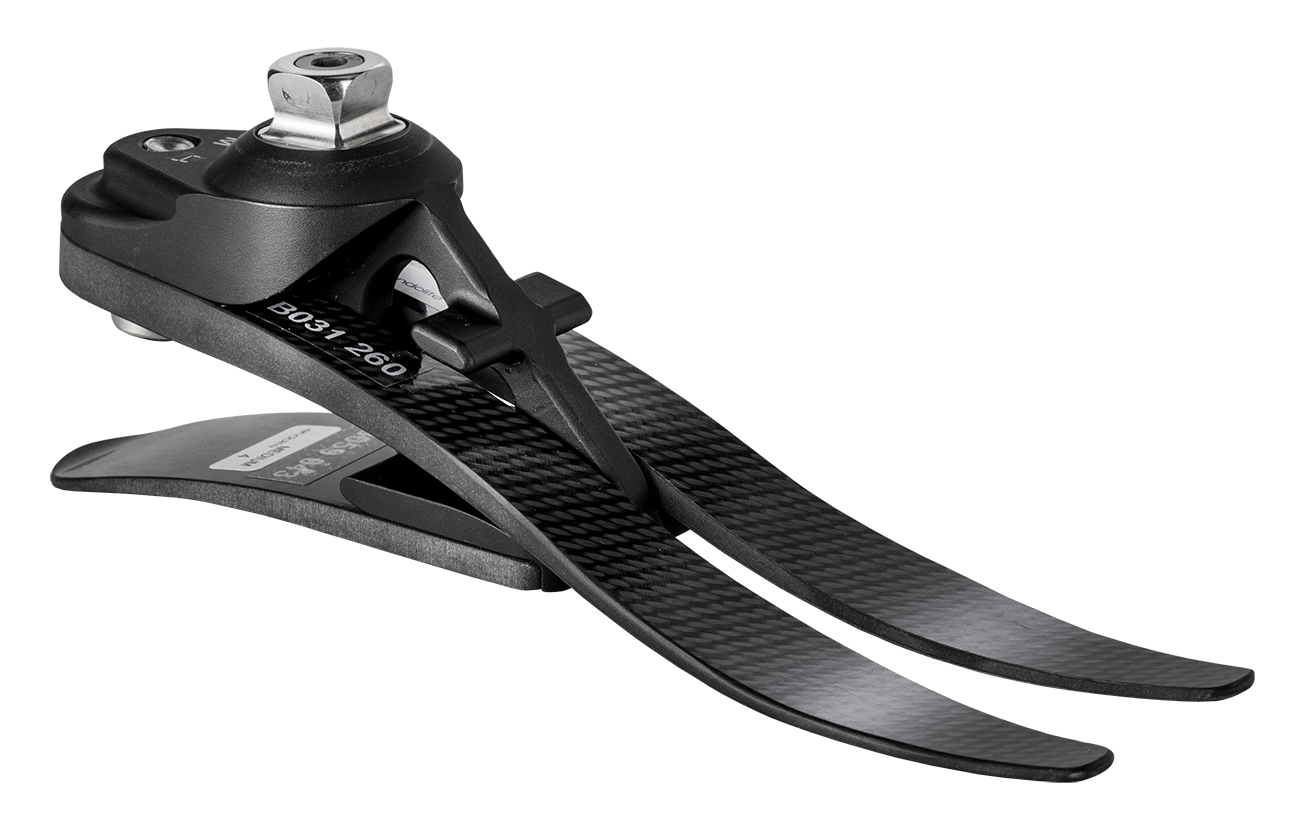Esprit
The Esprit foot is a low profile foot for moderate and high K level users. It provide excellent energy response and is an ideal foot for longer residual limbs or where additional components are required.
- Activity level 3
- Submersion to a depth of 1m
Esprit Clinical Evidence Reference
Clinical Outcomes using e-carbon feet
-
Safety
- High mean radius of curvature for Esprit-style e-carbon feet2: “The larger the radius of curvature, the more stable is the foot”
-
Mobility
- Allow variable running speeds3
- Increased self-selected walking speed4
- Elite-style e-carbon feet (L code VL5987) or VT units demonstrate the second highest mobility levels, behind only microprocessor feet5
-
Loading symmetry
- Users demonstrate confidence in prosthetic loading during high activity6
- Improved prosthetic push-off work compared to SACH feet7
- Increased prosthetic positive work done4
-
User satisfaction
- High degree of user satisfaction, particularly with high activity users8
References
-
Full Reference Listing
-
Crimin A, McGarry A, Harris EJ, et al.
The effect that energy storage and return feet have on the propulsion of the body: A pilot study. Proc Inst Mech Eng [H] 2014; 228: 908–915.
-
Curtze C, Hof AL, van Keeken HG, et al.
Comparative roll-over analysis of prosthetic feet. J Biomech 2009; 42: 1746–1753.
-
Strike SC, Arcone D, Orendurff M.
Running at submaximal speeds, the role of the intact and prosthetic limbs for trans-tibial amputees. Gait Posture 2018; 62: 327–332.
-
Ray SF, Wurdeman SR, Takahashi KZ.
Prosthetic energy return during walking increases after 3 weeks of adaptation to a new device. J Neuroengineering Rehabil 2018; 15: 6.
-
Wurdeman SR, Stevens PM, Campbell JH.
Mobility analysis of AmpuTees (MAAT 5): Impact of five common prosthetic ankle-foot categories for individuals with diabetic/dysvascular amputation. J Rehabil Assist Technol Eng 2019; 6: 2055668318820784.
-
Haber CK, Ritchie LJ, Strike SC.
Dynamic elastic response prostheses alter approach angles and ground reaction forces but not leg stiffness during a start-stop task. Hum Mov Sci 2018; 58: 337–346.
-
Rock CG, Wurdeman SR, Stergiou N, Takahashi KZ.
Stride-to-stride fluctuations in transtibial amputees are not affected by changes in push-off mechanics from using different prostheses. PloS one. 2018;13(10).
-
Highsmith MJ, Kahle JT, Miro RM, et al.
Differences in Military Obstacle Course Performance Between Three Energy-Storing and Shock-Adapting Prosthetic Feet in High-Functioning Transtibial Amputees: A Double-Blind, Randomized Control Trial. Mil Med 2016; 181: 45–54.
-



